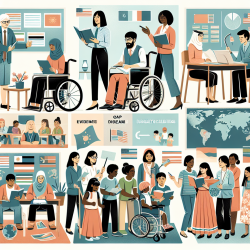Introduction
In our fast-paced digital world, sleep problems among adolescents are increasingly prevalent. Research indicates that up to 80% of adolescents with chronic medical, neurodevelopmental, and psychiatric conditions experience sleep issues (Owens, 2007). These challenges can have profound impacts on physical health, mental well-being, and daily functioning (Reidy et al., 2016). The study titled How do adolescents experience a newly developed Online Single Session Sleep Intervention? A Think-Aloud Study provides insightful data on an innovative approach to addressing these issues.
The Need for Innovative Interventions
Traditional cognitive-behavioral therapy for insomnia (CBT-I) is often inaccessible due to resource constraints and high attrition rates (Ellis et al., 2015). The study highlights the development of a brief, self-guided online sleep intervention tailored for adolescents. This intervention is designed to be accessible, engaging, and effective, addressing the gap left by traditional methods.
Key Findings: Enhancing User Experience
The study utilized a qualitative approach with think-aloud interviews to gather insights from adolescents aged 17-19. The participants' feedback was categorized into four main themes:
- Educative: Learning, but More Fun - Participants appreciated the educational content, suggesting that more visuals could enhance learning.
- Effortless: Quicker and Easier - The intervention's brevity and ease of use were highlighted as key strengths.
- Personalization: Power of Choice - The ability to tailor the intervention to individual needs was seen as a major advantage.
- Positivity: Just Good Vibes - A positive, solution-focused tone was crucial for user engagement.
Implications for Practitioners
For practitioners in the field of speech language pathology and mental health, these findings underscore the importance of user-centered design in digital interventions. By incorporating feedback from adolescents, practitioners can create more engaging and effective tools. The study suggests that incorporating visual elements, ensuring ease of use, and allowing for personalization can significantly enhance the effectiveness of digital interventions.
Encouraging Further Research
While the study provides valuable insights, it also highlights areas for further research. Practitioners are encouraged to explore the potential of single-session interventions in other areas of adolescent mental health. By leveraging digital platforms, we can create scalable solutions that address the unique needs of adolescents.
Conclusion
The study on the online single session sleep intervention offers a promising glimpse into the future of adolescent mental health care. By focusing on user experience and personalization, we can create interventions that are not only effective but also engaging and accessible. Practitioners are encouraged to incorporate these findings into their practice and continue exploring innovative solutions for adolescent mental health challenges.
To read the original research paper, please follow this link: How do adolescents experience a newly developed Online Single Session Sleep Intervention? A Think-Aloud Study.










